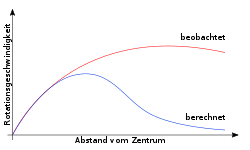COSMOS 3D dark matter map
The map reveals a loose network of dark matter filaments, gradually collapsing under the relentless pull of gravity, and growing clumpier over time.
The three axes of the box correspond to sky position (in right ascension and declination), and distance from the Earth increasing from left to right (as measured by cosmological redshift). Note how the clumping of the dark matter becomes more pronounced, moving right to left across the volume map, from the early Universe to the more recent Universe.
The distribution of mass in the Hubble Space Telescope COSMOS survey, determined from measurements of weak gravitational lensing. The field of view covers about nine times the size of the full moon, and the third dimension stretches from redshift z=0 to z=1. The figure shows one isosurface of the gravitational potential.
Originally uploaded at en.wikipedia as File:COSMOS 3D dark matter map.jpg by User:RichardMassey. (Transfered by User:Quibik.)
Also available at http://spacetelescope.org/images/heic0701b/
Relevante Bilder
Relevante Artikel
Dunkle MaterieDunkle Materie ist eine postulierte Form von Materie, die nicht direkt sichtbar ist, aber über die Gravitation wechselwirkt. Ihre Existenz wird im Standardmodell der Kosmologie, dem Lambda-CDM-Modell postuliert, weil innerhalb dieses Modells nur so die Bewegung der sichtbaren Materie erklärt werden kann, insbesondere die Geschwindigkeit, mit der sichtbare Sterne das Zentrum ihrer Galaxie umkreisen. In den Außenbereichen ist diese Geschwindigkeit deutlich höher, als man es allein aufgrund der Gravitation der Sterne, Gas- und Staubwolken erwarten würde. .. weiterlesen




